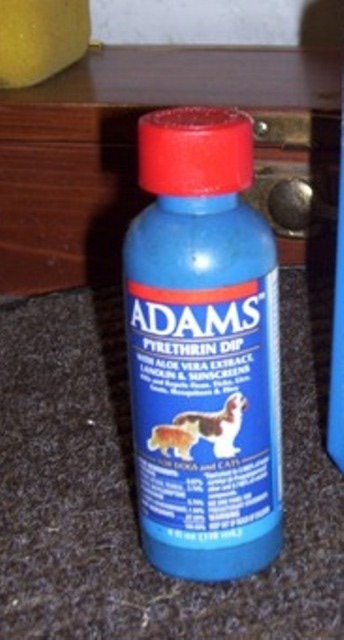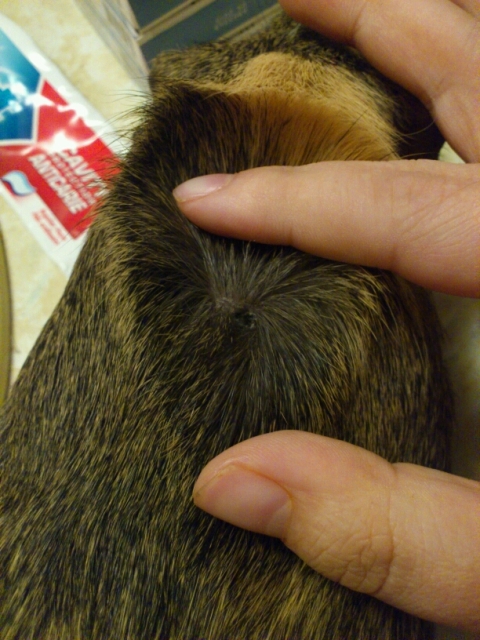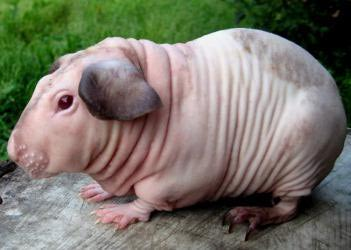QuestionI adopted 2 male guinea pigs 1 1/2 years ago. They were brothers and have been together all their life. Last November I adopted a baby guinea pig, a male and they all got along well. On Wednesday night I found the one older pig, Zack dead in the cage. I took out Dime and Cookie, cleaned the cage completely and they were fine. Now they are not eating and the youngest one looks as though he won't make it through the night. Why would they stop eating. Today I forced water into them and some mushed up food but now I'm at a loss. If you have any ideas please let me know, I really don't want to loose either one.
AnswerKimberly,
They most likely stopped eating due to the loosing Zack. See Guinea Pigs develop close bonds with each other and as such they grieve for their lost cage mate. It sounds like they have stopped eating for this reason. So while they are grieving your going to need to hand feed them both so you don't loose them also. Here is the easiest way to hand feed them.
Harkness and Wagner note that in one day, adult guinea pigs eat approximately:
6 grams dry feed/100 grams of body weight
10 to 40 ml water per 100 grams of body weight ( will vary with temperature, humidity, etc.)
Weigh your pigs to estimate dietary needs. A 1 kilo pig (2.2 pounds) might require 60 grams (2 1/10 oz.) dry food and 100 ml (6 2/3 Tablespoons) of water. Keep in mind many pigs have lost weight before the anorexia is noticed. If you have difficulty determining how much food your pet is consuming, weigh them before and after feeding.
Note:
100grams = 3 1/2 oz
15ml = 1 Tablespoon
1cc = 1 ml
The day's ration of alfalfa pellets (which is any type of pellet unless it says Timothy Compelete on it. Which is what you'll want to switch to when they are eating on their own again. But for now Alfalfa is the best for them.) can be crushed in a coffee grinder (or ground with a mortar and pestle) or soaked overnight in a refrigerator and crushed by spoon. About 20 grams of powder and 5 mls of water will make a good paste (experiment). A stiffer paste reduces the danger of asphyxiation. Some piggies will appreciate the mash being warmed for a few seconds in the microwave. Pellets work the teeth (especially a drier mash) and stimulate the digestive system more effectively than baby food, though prepared peas, mixed veggies, etc are much smoother than pellets. Also try mixing the pellets powder with some diluted all natural cranberry juice it'll help provide the extra vitamin C they need. Also you can mush up some fresh food in the blender like greens, veggies and such to give them once a day to help provide the extra vitamins needed for both of them.
Perhaps 20 to 25grams of mash with 15 ml water on the side will be all you will be able to do at one time. Several (4-6 or more) feeding sessions per day will be necessary, to keep things moving through your pet's system and provide adequate nutrition. A 1 cc. syringe with the restrictive tip cut off (to leave a tube of even diameter) and sanded smooth is useful for feeding. A spare 1 cc needleless syringe can be used to offer water (with vitamin C, if needed) in between bites and to administer medications. A straw can be used in a pinch, though it is tedious. There are many techniques -- most basic is to feed slowly and do not rest your pig on its back ( a greater chance of aspiration). Some people find a vertical position works well. Some people wrap their pet in a little "pouch". Others hold the guinea pig facing away from them. Make sure the pig is swallowing. You do not want to get food into the lungs. A stiffer mix may help prevent aspiration.
...stick the syringe into the side of the mouth directly behind the front teeth, and work it down to the back teeth until the pig starts grinding on the end of the syringe. Then ... slowly depress the syringe contents into the mouth, stopping if the pig stops chewing. As long as there is chewing motion - the pig is swallowing. A little wiggle of the syringe will often get the chewing motion to start up again if it's stopped. Vicki of JPGPR finds pigs feel more secure when they have their feet on a hard surface. Place your pig on a towel on the counter, corralled in the crook of your arm. Experiment with gently holding your pet's chin. You can be firm if necessary.
Your goal is to get your guinea pig back to a normal eating routine, so offer food occasionally while you are hand-feeding and make sure there is food always available in their living quarters. Some people find their ill cavy responds enthusiastically to grass. If you have fresh, clean, pesticide-free grass available, be sure to offer it to your pet. Avoid areas next to busy roadsides or those frequented by dogs or livestock. Food intake can be monitored by weighing the guinea pig before and after feedings if you question how much is actually being eaten.
Using the same system as for feeding make sure to give them both water, adult Guinea Pigs drink 4 oz of water a day so make sure they both are getting 4 ounces of water each daily. Otherwise they can become severally dehydrated.
I hope this helps and that they both start eating again soon.
Take care now,
Jules

 Wild Thang
QuestionI want to take my guinea pig to a new home whic
Wild Thang
QuestionI want to take my guinea pig to a new home whic
 Eye Problems
QuestionHi, one of my guinea pigs has an eye problem. I
Eye Problems
QuestionHi, one of my guinea pigs has an eye problem. I
 crusty/watery eyes
QuestionQUESTION: I noticed today that one of my guinea
crusty/watery eyes
QuestionQUESTION: I noticed today that one of my guinea
 Guinea pig lump on back and open sore
QuestionQUESTION: I have 2 guinea pigs, no idea on the
Guinea pig lump on back and open sore
QuestionQUESTION: I have 2 guinea pigs, no idea on the
 Guinea Pig Genes?
QuestionI have a male Dalmatian guinea pig, and I have
Guinea Pig Genes?
QuestionI have a male Dalmatian guinea pig, and I have